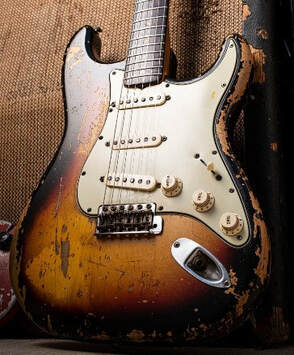What makes vintage Fender Stratocasters so popular? The answer is: quality of the wood, different paints, different materials, different construction, different manufacturing processes, and also different electronics, especially different pickups. All these aspects play some, even if a minor, role in the final sound. The question is, can these differences be audible? Of course, without a doubt. For all those who have had the chance to try such guitars, this is definitely an exciting discovering.
The purpose of this chapter is to examine in greater detail the Fender Stratocaster’s major components and to describe how they have evolved between 1954 and 1987. The information provided will give you handy identification tips and contribute to selecting useful criteria for both dating and authenticating vintage Strats.
Numerous details distinguish Stratocasters throughout the years, but it is important to bear in mind that all the changes have been introduced gradually. For example, between 1964 and 1967, both Black Bottom and Grey Bottom pickups were used.
Regarding the specs of the Stratocasters after the 1985 buyout, check "The history of the Stratocaster" and "Stratocasters Database: specs and series" chapters.
The purpose of this chapter is to examine in greater detail the Fender Stratocaster’s major components and to describe how they have evolved between 1954 and 1987. The information provided will give you handy identification tips and contribute to selecting useful criteria for both dating and authenticating vintage Strats.
Numerous details distinguish Stratocasters throughout the years, but it is important to bear in mind that all the changes have been introduced gradually. For example, between 1964 and 1967, both Black Bottom and Grey Bottom pickups were used.
Regarding the specs of the Stratocasters after the 1985 buyout, check "The history of the Stratocaster" and "Stratocasters Database: specs and series" chapters.




